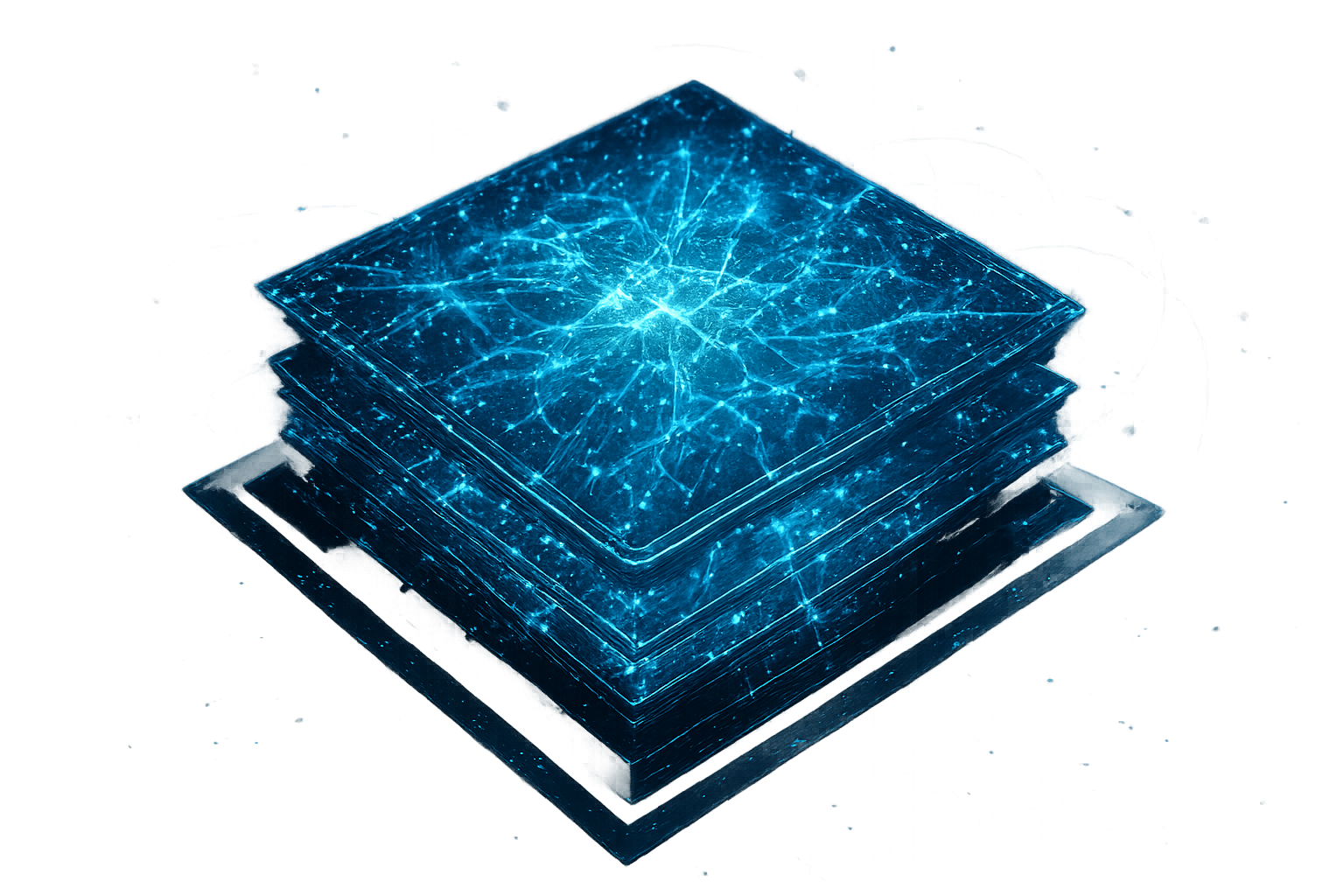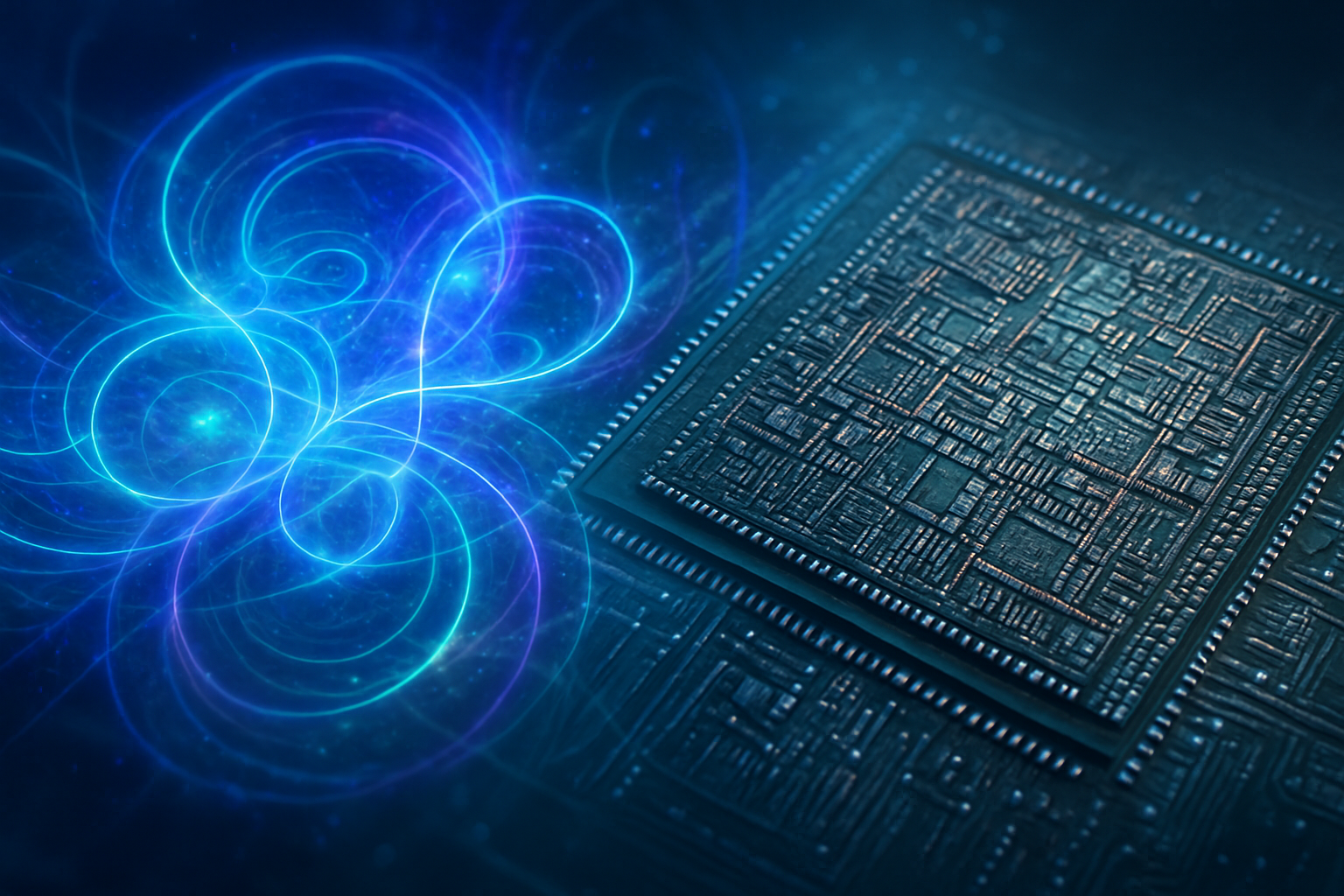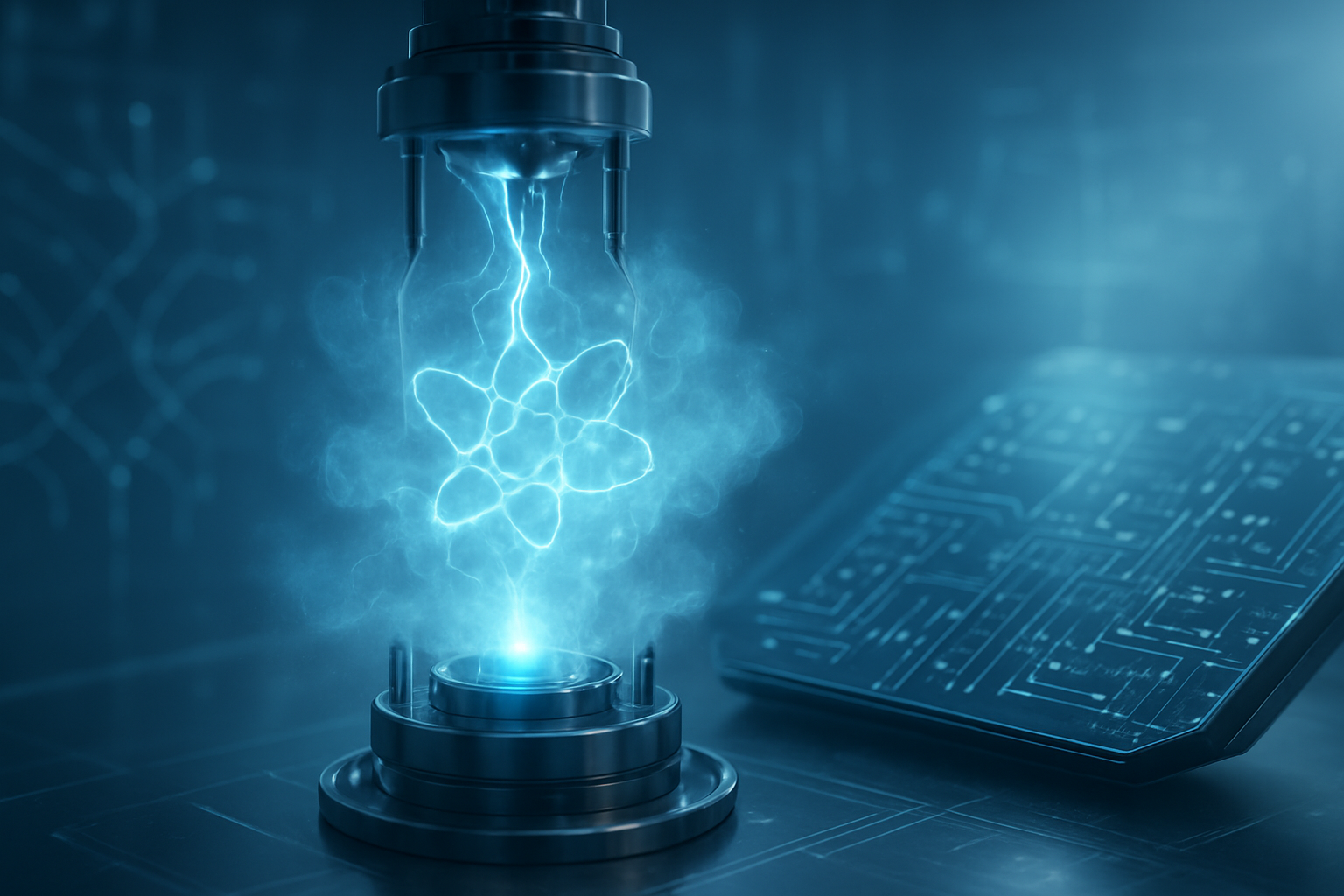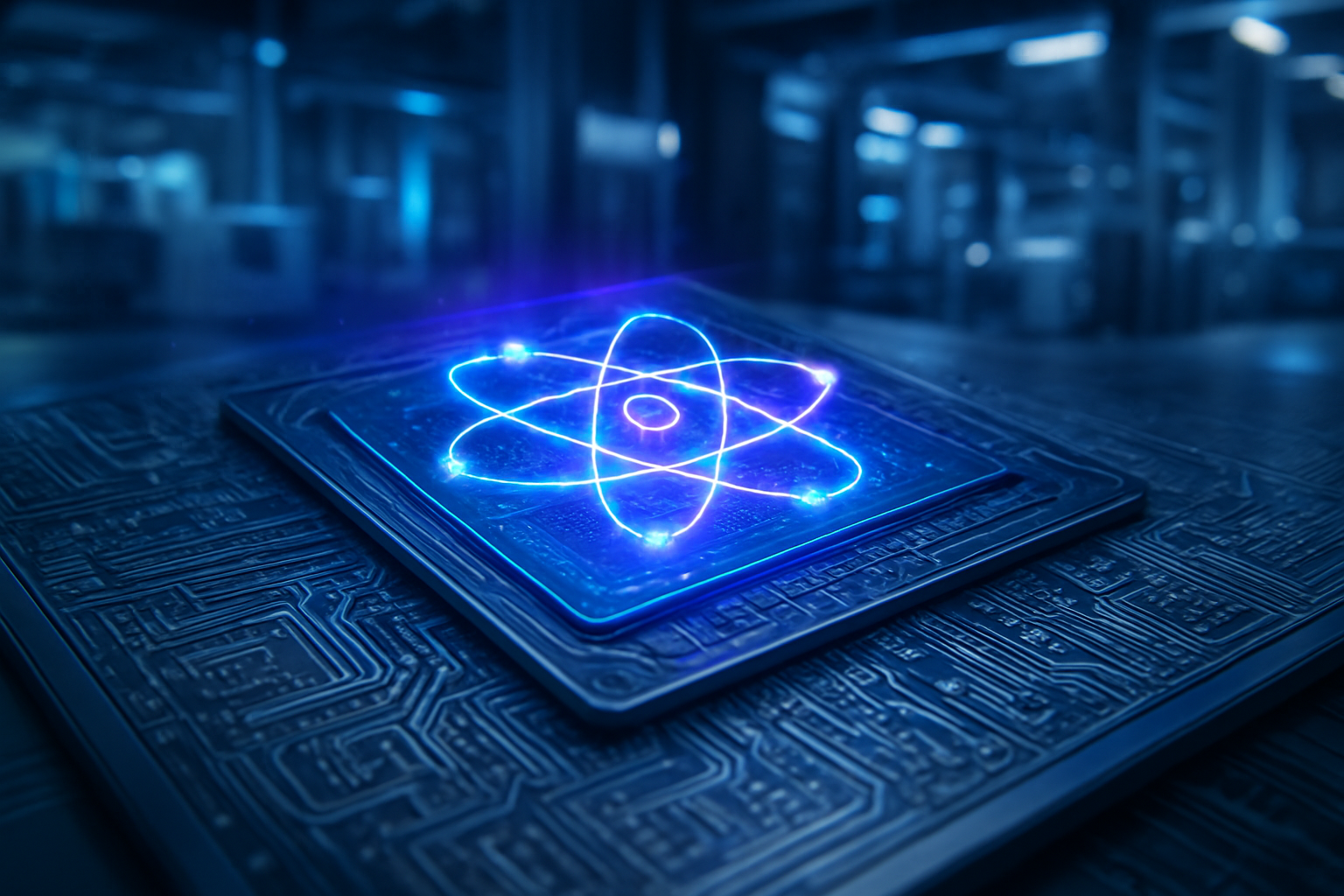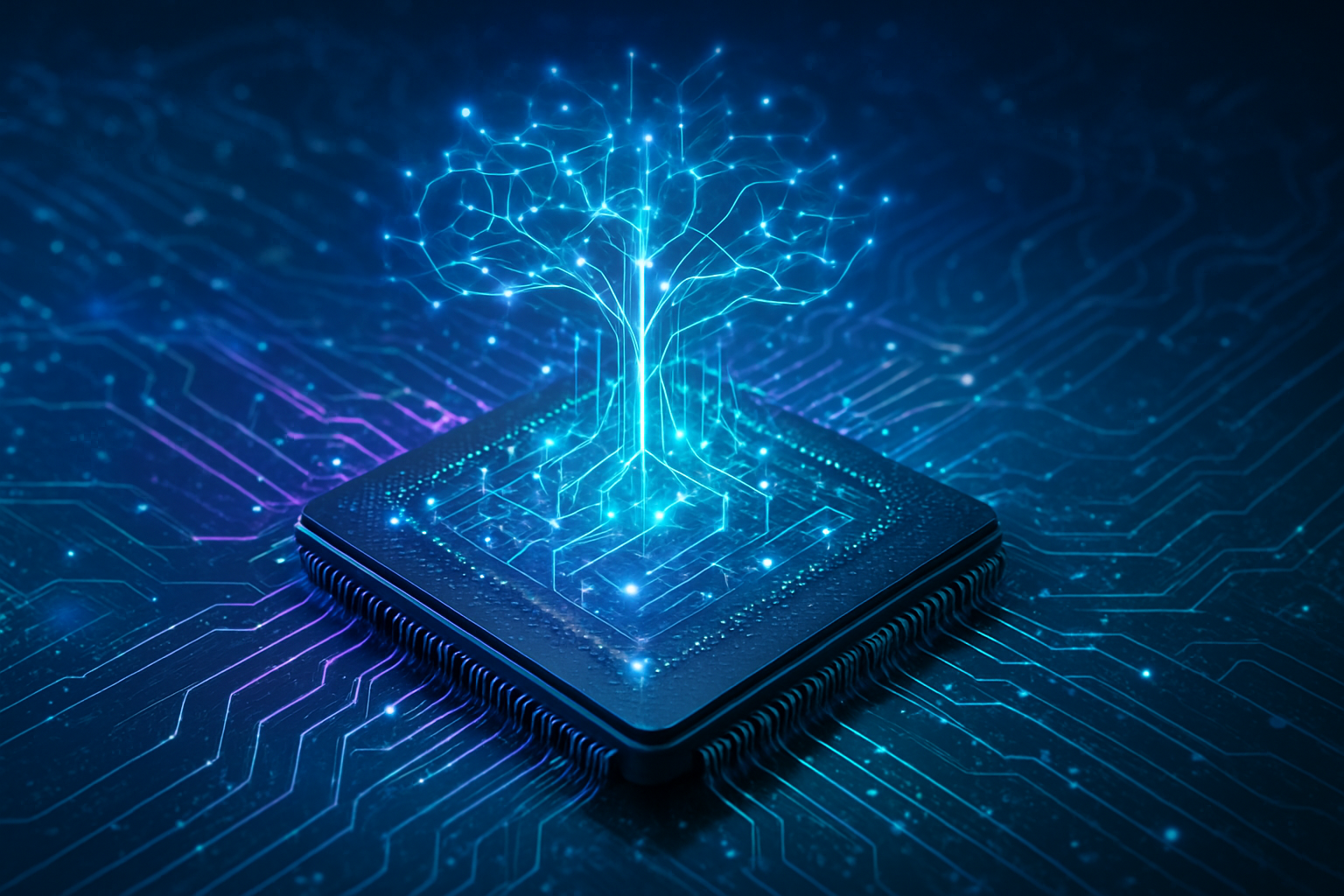The dawn of quantum computing, while still in its nascent stages, is already sending profound ripples through the semiconductor industry, creating an immediate and urgent demand for a new generation of highly specialized chips. Far from merely being a futuristic concept, the eventual widespread adoption of quantum machines—whether leveraging superconducting circuits, silicon spin qubits, or trapped ions—is inexorably linked to radical advancements in semiconductor research and development. This symbiotic relationship means that the pursuit of exponentially powerful quantum processors is simultaneously driving unprecedented innovation in material science, ultra-precise fabrication techniques, and cryogenic integration, reshaping the very foundations of chip manufacturing today to build the quantum bedrock of tomorrow.
Redefining the Microchip: The Technical Demands of Quantum Processors
Quantum computing is poised to usher in a new era of computational power, but its realization hinges on the development of highly specialized semiconductors that diverge significantly from those powering today's classical computers. This paradigm shift necessitates a radical rethinking of semiconductor design, materials, and manufacturing to accommodate the delicate nature of quantum bits (qubits) and their unique operational requirements.
The fundamental difference between classical and quantum computing lies in their basic units of information: bits versus qubits. While classical bits exist in definitive states of 0 or 1, qubits leverage quantum phenomena like superposition and entanglement, allowing them to exist in multiple states simultaneously and perform complex calculations exponentially faster. This quantum behavior demands specialized semiconductors with stringent technical specifications:
Qubit Control: Quantum semiconductors must facilitate extremely precise and rapid manipulation of qubit states. For instance, silicon-based spin qubits, a promising platform, are controlled by applying voltage to metal gates to create quantum dots, which then confine single electrons or holes whose spin states encode quantum information. These gates precisely initialize, flip (perform logic operations), and read out quantum states through mechanisms like electric-dipole spin resonance. Many qubit architectures, including superconducting and spin qubits, rely on microwave signals for manipulation and readout. This requires sophisticated on-chip microwave circuitry and control electronics capable of generating and processing signals with high fidelity at gigahertz frequencies, often within the cryogenic environment. Efforts are underway to integrate these control electronics directly alongside the qubits to reduce latency and wiring complexity.
Coherence: Qubits are extraordinarily sensitive to environmental noise, including heat, electromagnetic radiation, and vibrations, which can cause them to lose their quantum state—a phenomenon known as decoherence. Maintaining quantum coherence for sufficiently long durations is paramount for successful quantum computation and error reduction. This sensitivity demands materials and designs that minimize interactions between qubits and their surroundings. Ultra-pure materials and atomically precise fabrication are crucial for extending coherence times. Researchers are exploring various semiconductor materials, including silicon carbide (SiC) with specific atomic-scale defects (vacancies) that show promise as stable qubits. Topological qubits, while still largely experimental, theoretically offer intrinsic error protection by encoding quantum information in robust topological states, potentially simplifying error correction.
Cryogenic Operation: A defining characteristic for many leading qubit technologies, such as superconducting qubits and semiconductor spin qubits, is the requirement for extreme cryogenic temperatures. These systems typically operate in the millikelvin range (thousandths of a degree above absolute zero), colder than outer space. At these temperatures, thermal energy is minimized, which is essential to suppress thermal noise and maintain the fragile quantum states. Traditional semiconductor devices are not designed for such cold environments, often failing below -40°C. This has historically necessitated bulky cabling to connect room-temperature control electronics to cryogenic qubits, limiting scalability. Future quantum systems require "CryoCMOS" (cryogenic complementary metal-oxide-semiconductor) control chips that can operate reliably at these ultra-low temperatures, integrating control circuitry closer to the qubits to reduce power dissipation and wiring complexity, thereby enabling larger qubit counts.
The specialized requirements for quantum computing semiconductors lead to fundamental differences from their classical counterparts. Classical semiconductors prioritize density, speed, and power efficiency for binary operations. Quantum semiconductors, in contrast, demand atomic precision and control over individual atoms or electrons. While silicon is a promising material for spin qubits due to its compatibility with existing fabrication techniques, the process of creating quantum dots and controlling individual spins introduces new challenges in lithography and metrology. While silicon remains a cornerstone, quantum computing R&D extends to exotic material heterostructures, often combining superconductors (e.g., aluminum) with specific semiconductors (e.g., Indium-Arsenide nanowires) for certain qubit types. Quantum dots, which confine single electrons in transistor-like structures, and defect centers in materials like silicon carbide are also critical areas of material research. Classical semiconductors function across a relatively wide temperature range. Quantum semiconductors often require specialized cooling systems, like dilution refrigerators, to achieve temperatures below 100 millikelvin, which is crucial for their quantum properties to manifest and persist. This also necessitates materials that can withstand differential thermal contraction without degradation.
The AI research community and industry experts have reacted to the advancements in quantum computing semiconductors with a mix of optimism and strategic caution. There is overwhelming optimism regarding quantum computing's transformative potential, particularly for AI. Experts foresee acceleration in complex AI algorithms, leading to more sophisticated machine learning models, enhanced data processing, and optimized large-scale logistics. Applications span drug discovery, materials science, climate modeling, and cybersecurity. The consensus among experts is that quantum computers will complement, rather than entirely replace, classical systems. The most realistic near-term path for industrial applications involves "hybrid quantum-classical systems" where quantum processors handle specific complex tasks that classical computers struggle with. Tech giants such as IBM (NYSE: IBM), Google (NASDAQ: GOOGL), Intel (NASDAQ: INTC), and Microsoft (NASDAQ: MSFT), along with numerous startups (e.g., IonQ (NYSE: IONQ), Rigetti Computing (NASDAQ: RGTI), D-Wave Systems (NYSE: QBTS)), are investing heavily in quantum computing R&D, focusing on diverse qubit technologies. Governments globally are also pouring billions into quantum technology, recognizing its strategic importance, with a notable rivalry emerging between the U.S. and China. Many industry experts anticipate reaching "quantum advantage"—where quantum computers demonstrably outperform classical machines for certain tasks—within the next 3 to 5 years. There's also a growing awareness of "Q-Day," estimated around 2030, when quantum computers could break current public-key encryption standards, accelerating government and industry investment in quantum-resistant cryptography.
Corporate Chessboard: Who Wins and Loses in the Quantum-Semiconductor Race
The burgeoning demand for specialized quantum computing semiconductors is poised to significantly reshape the landscape for AI companies, tech giants, and startups, ushering in a new era of computational possibilities and intense competition. This shift is driven by the unique capabilities of quantum computers to tackle problems currently intractable for classical machines, particularly in complex optimization, simulation, and advanced AI. The global quantum hardware market is projected to grow from USD 1.8 billion in 2024 to USD 9.6 billion by 2030, with a compound annual growth rate (CAGR) of 31.2%, signaling substantial investment and innovation in the sector. The quantum chip market specifically is expected to reach USD 7.04 billion by 2032, growing at a CAGR of 44.16% from 2025.
The demand for specialized quantum computing semiconductors offers transformative capabilities for AI companies. Quantum computers promise to accelerate complex AI algorithms, leading to the development of more sophisticated machine learning models, enhanced data processing, and optimized large-scale logistics. This convergence is expected to enable entirely new forms of AI, moving beyond the incremental gains of classical hardware and potentially catalyzing the development of Artificial General Intelligence (AGI). Furthermore, the synergy works in both directions: AI is increasingly being applied to accelerate quantum and semiconductor design, creating a virtuous cycle where quantum algorithms enhance AI models used in designing advanced semiconductor architectures, leading to faster and more energy-efficient classical AI chips. Companies like NVIDIA (NASDAQ: NVDA), a powerhouse in AI-optimized GPUs, are actively exploring how their hardware can interface with and accelerate quantum workloads, recognizing the strategic advantage these advanced computational tools will provide for next-generation AI applications.
Tech giants are at the forefront of this quantum-semiconductor revolution, heavily investing in full-stack quantum systems, from hardware to software. Companies such as IBM (NYSE: IBM), Google (NASDAQ: GOOGL), Microsoft (NASDAQ: MSFT), Intel (NASDAQ: INTC), and Amazon Web Services (NASDAQ: AMZN) are pouring significant resources into research and development, particularly in semiconductor-based qubits. IBM has made notable strides, recently demonstrating the ability to run quantum error-correction algorithms on standard AMD chips, which significantly reduces the cost and complexity of scaling quantum systems, making them more accessible. IBM also aims for a 1,000+ qubit system and larger, more reliable systems in the future. Google has achieved breakthroughs with its "Willow" quantum chip and advancements in quantum error correction. Intel is a key proponent of silicon spin qubits, leveraging its deep expertise in chip manufacturing to advance quantum hardware. Microsoft is involved in developing topological qubits and its Azure Quantum platform provides cloud access to various quantum hardware. These tech giants are also driving early adoption through cloud-accessible quantum systems, allowing enterprises to experiment with quantum computing without needing to own the infrastructure. This strategy helps democratize access and foster a broader ecosystem.
Startups are crucial innovators in the quantum computing semiconductor space, often specializing in specific qubit architectures, quantum materials, quantum software, or quantum-classical integration. Companies like IonQ (NYSE: IONQ) (trapped ion), Atom Computing (neutral atom), PsiQuantum (photonic), Rigetti Computing (NASDAQ: RGTI) (superconducting), and D-Wave Systems (NYSE: QBTS) (annealers) are pushing the boundaries of qubit development and quantum algorithm design. These agile companies attract significant private and public funding, becoming critical players in advancing various quantum computing technologies. However, the high costs associated with building and operating quantum computing infrastructure and the need for a highly skilled workforce present challenges, potentially limiting accessibility for smaller entities without substantial backing. Despite these hurdles, strategic collaborations with tech giants and research institutions offer a pathway for startups to accelerate innovation.
A diverse ecosystem of companies stands to benefit from the demand for specialized quantum computing semiconductors:
- Quantum Hardware Developers: Companies directly building quantum processing units (QPUs) like IBM (NYSE: IBM), Google (NASDAQ: GOOGL), Microsoft (NASDAQ: MSFT), Intel (NASDAQ: INTC), Rigetti Computing (NASDAQ: RGTI), IonQ (NYSE: IONQ), Quantinuum (Honeywell), D-Wave Systems (NYSE: QBTS), Atom Computing, PsiQuantum, Xanadu, Diraq, QuEra Computing, and others specializing in superconducting, trapped-ion, neutral-atom, silicon-based, or photonic qubits.
- Traditional Semiconductor Manufacturers: Companies like Intel (NASDAQ: INTC), Taiwan Semiconductor Manufacturing Company (NYSE: TSM), and Samsung (KRX: 005930), which can adapt their existing fabrication processes and integrate quantum simulation and optimization into their R&D pipelines to maintain leadership in chip design and manufacturing.
- AI Chip Developers: NVIDIA (NASDAQ: NVDA) is exploring how its GPUs can support or integrate with quantum workloads.
- Specialized Component and Equipment Providers: Companies manufacturing ultra-stable lasers and photonic components (e.g., Coherent (NYSE: COHR)) or high-precision testing equipment for quantum chips (e.g., Teradyne (NASDAQ: TER)).
- Quantum Software and Service Providers: Companies offering cloud access to quantum systems (e.g., IBM Quantum, Azure Quantum, Amazon Braket) and those developing quantum algorithms and applications for specific industries (e.g., TCS (NSE: TCS), Infosys (NSE: INFY), HCL Technologies (NSE: HCLTECH)).
- Advanced Materials Developers: Companies focused on developing quantum-compatible materials like silicon carbide (SiC), gallium arsenide (GaAs), and diamond, which are essential for future quantum semiconductor fabrication.
The rise of quantum computing semiconductors will intensify competition across the technology sector. Nations and corporations that successfully leverage quantum technology are poised to gain significant competitive advantages, potentially reshaping global electronics supply chains and reinforcing the strategic importance of semiconductor sovereignty. The competitive landscape is characterized by a race for "quantum supremacy," strategic partnerships and collaborations, diverse architectural approaches (as no single qubit technology has definitively "won" yet), and geopolitical considerations, making quantum technology a national security battleground.
Quantum computing semiconductors pose several disruptive implications for existing products and industries. Cybersecurity is perhaps the most immediate and significant disruption. Quantum computers, once scaled, could break many currently used public-key encryption methods (e.g., RSA, elliptic curve cryptography), posing an existential threat to data security. This drives an urgent need for the development and embedding of post-quantum cryptography (PQC) solutions into semiconductor hardware. While quantum computers are unlikely to entirely replace classical AI hardware in the short term, they will play an increasingly vital role in training next-generation AI models and enabling problems that are currently intractable for classical systems. This could lead to a shift in demand towards quantum-enhanced AI hardware. The specialized requirements of quantum processors (e.g., ultra-low temperatures for superconducting qubits) will necessitate rethinking traditional chip designs, manufacturing processes, and materials. This could render some existing semiconductor designs and fabrication methods obsolete or require significant adaptation. Quantum computing will also introduce new, more efficient methods for material discovery, process optimization, and defect detection in semiconductor manufacturing.
Companies are adopting varied market positioning strategies to capitalize on the quantum computing semiconductor wave. Tech giants like IBM (NYSE: IBM) and Google (NASDAQ: GOOGL) are pursuing full-stack approaches, controlling hardware, software, and cloud access to their quantum systems, aiming to establish comprehensive ecosystems. Many startups focus on niche areas, such as specific qubit architectures or specialized software and algorithms for particular industry applications. The industry is increasingly embracing hybrid approaches, where quantum computers act as accelerators for specific complex problems, integrating with classical supercomputers. Cloud deployment is a dominant market strategy, democratizing access to quantum resources and lowering entry barriers for enterprises. Strategic partnerships and collaborations are critical for accelerating R&D, overcoming technological hurdles, and bringing quantum solutions to market. Finally, companies are targeting sectors like finance, logistics, pharmaceuticals, and materials science, where quantum computing can offer significant competitive advantages and tangible benefits in the near term.
A New Era of Computation: Quantum's Broader Impact
The influence of quantum computing on future semiconductor R&D is poised to be transformative, acting as both a catalyst for innovation within the semiconductor industry and a fundamental driver for the next generation of AI. This impact spans materials science, chip design, manufacturing processes, and cybersecurity, introducing both immense opportunities and significant challenges.
Quantum computing is not merely an alternative form of computation; it represents a paradigm shift that will fundamentally alter how semiconductors are conceived, developed, and utilized. The intense demands of building quantum hardware are already pushing the boundaries of existing semiconductor technology, leading to advancements that will benefit both quantum and classical systems. Quantum devices require materials with near-perfect properties. This necessity is accelerating R&D into ultra-clean interfaces, novel superconductors, and low-defect dielectrics, innovations that can also significantly improve traditional logic and memory chips. The need for sub-nanometer patterning and exceptional yield uniformity in quantum chips is driving progress in advanced lithography techniques like Extreme Ultraviolet (EUV) lithography, atomic-layer processes, and 3D integration, which are critical for the entire semiconductor landscape. Quantum computers often operate at extremely low cryogenic temperatures, necessitating the development of classical control electronics that can function reliably in such environments. This push for "quantum-ready" CMOS and low-power ASICs strengthens design expertise applicable to data centers and edge-AI environments. Quantum computing excels at solving complex optimization problems, which are vital in semiconductor design. This includes optimizing chip layouts, power consumption, and performance, problems that are challenging for classical computers due to the vast number of variables involved. As semiconductor sizes shrink, quantum effects become more pronounced. Quantum computation can simulate and analyze these effects, allowing chip designers to anticipate and prevent potential issues, leading to more reliable and efficient chips, especially for quantum processors themselves.
Quantum computing and AI are not competing forces but rather synergistic technologies that actively enhance each other. This convergence is creating unprecedented opportunities and is considered a paradigm shift. Quantum computing's exponential processing power means AI systems can learn and improve significantly faster. It can accelerate machine learning algorithms, reduce training times for deep learning models from months to days, and enable AI to tackle problems that are currently intractable for classical computers. AI algorithms are instrumental in advancing quantum technology itself. They optimize quantum hardware specifications, improve qubit readout and cooling systems, and manage error correction, which is crucial for stabilizing fragile quantum systems. As quantum technology matures, it will enable the development of new AI architectures and algorithms at an unprecedented scale and efficiency. Quantum machine learning (QML) is emerging as a field capable of handling high-dimensional or uncertain problems more effectively, leading to breakthroughs in areas like image recognition, drug discovery, and cybersecurity. The most realistic near-term path for industrial users involves hybrid classical-quantum systems, where quantum accelerators work in conjunction with classical computers to bridge capability gaps.
The potential impacts of quantum computing on semiconductor R&D are far-reaching. The convergence of quantum and semiconductor technologies promises faster innovation cycles across the board. Quantum simulations can accurately model molecular interactions, leading to the discovery of new materials with specific properties for various applications, including more efficient semiconductors, improved catalysts, and advanced lightweight metals. Quantum computing can improve semiconductor security by aiding in the development of quantum-resistant cryptographic algorithms, which can be incorporated into hardware during chip development. It can also generate truly random numbers, a critical element for secure chip operations. Quantum systems are beginning to solve complex scheduling, maintenance, and optimization problems in manufacturing, leading to improved efficiency and higher yields. Quantum computing is forcing the semiconductor industry to think beyond the limitations of Moore's Law, positioning early adapters at the forefront of the next computing revolution.
While the opportunities are vast, several concerns accompany the rise of quantum computing's influence. Quantum computing is still largely in the "noisy intermediate-scale quantum (NISQ)" phase, meaning current devices are fragile, error-prone, and limited in qubit count. Achieving fault-tolerant quantum computation with a sufficient number of stable qubits remains a major hurdle. Building quantum-compatible components requires atomic-scale precision, ultra-low noise environments, and cryogenic operation. Low manufacturing yields and the complexities of integrating quantum and classical components pose significant challenges. The specialized materials and fabrication processes needed for quantum chips can introduce new vulnerabilities into the semiconductor supply chain. There is a growing demand for quantum engineering expertise, and semiconductor companies must compete for this talent while maintaining their traditional semiconductor design capabilities. While quantum computing offers solutions for security, fault-tolerant quantum computers also pose an existential threat to current public-key encryption through algorithms like Shor's. Organizations need to start migrating to post-quantum cryptography (PQC) to future-proof their data and systems, a process that can take years.
Quantum computing represents a more fundamental shift than previous AI milestones. Past AI breakthroughs, such as deep learning, pushed the boundaries within classical computing frameworks, making classical computers more powerful and efficient at specific tasks. However, quantum computing introduces a new computational paradigm that can tackle problems inherently suited to quantum mechanics, unlocking capabilities that classical AI simply cannot achieve on its own. Previous AI advancements, while significant, were largely incremental improvements within the classical computational model. Quantum computing, by leveraging superposition and entanglement, allows for an exponential increase in processing capacity for certain problem classes, signifying a foundational shift in how information is processed. Milestones like Google's (NASDAQ: GOOGL) demonstration of "quantum supremacy" (or "quantum advantage") in 2019, where a quantum computer performed a specific computation impossible for classical supercomputers, highlight this fundamental difference. More recently, Google's "Quantum Echoes" algorithm demonstrated a 13,000x speedup over the fastest classical supercomputer for a physics simulation, showcasing progress toward practical quantum advantage. This signifies a move from theoretical potential to practical impact in specific domains.
The Horizon of Innovation: Future Trajectories of Quantum-Enhanced Semiconductors
Quantum computing is poised to profoundly transform semiconductor Research & Development (R&D) by offering unprecedented computational capabilities that can overcome the limitations of classical computing. This influence is expected to manifest in both near-term advancements and long-term paradigm shifts across various aspects of semiconductor technology.
In the near term (next 5-10 years), the primary focus will be on the synergy between quantum and classical systems, often referred to as hybrid quantum-classical computing architectures. Quantum processors will serve as accelerators for specific, challenging computational tasks, augmenting classical CPUs rather than replacing them. This involves specialized quantum co-processors working alongside traditional silicon-based processors. There will be continued refinement of existing silicon spin qubit technologies, leveraging their compatibility with CMOS manufacturing to achieve higher fidelities and longer coherence times. Companies like Intel (NASDAQ: INTC) are actively pursuing silicon spin qubits due to their potential for scalability with advanced lithography. The semiconductor industry will develop specialized cryogenic control chips that can operate at the extremely low temperatures required for many quantum operations. There is also progress in integrating all qubit-control components onto classical semiconductor chips, enabling manufacturing via existing semiconductor fabrication. Experts anticipate seeing the first hints of quantum computers outperforming classical machines for specific tasks by 2025, with increasing likelihood beyond that. This includes running quantum error-handling algorithms on readily available hardware like AMD's field-programmable gate arrays (FPGAs). The intersection of quantum computing and AI will enhance the efficiency of AI and allow AI to integrate quantum solutions into practical applications, creating a reciprocal relationship.
The long-term impact (beyond 10 years) is expected to be a profound revolution across numerous sectors, leading to entirely new classes of computing devices. The scaling of quantum processors to thousands or even millions of stable qubits will be a key long-term goal, necessitating advanced error correction mechanisms. Achieving large-scale quantum processors will require entirely new semiconductor fabrication facilities capable of handling ultra-pure materials and extreme precision lithography. Quantum computing, particularly when combined with AI, is predicted to redefine what is computationally possible, accelerating AI development and tackling optimization problems currently intractable for supercomputers. This could lead to a new industrial revolution. Quantum computing signifies a foundational change, enabling not just better AI, but entirely new forms of computation. Quantum simulations could also contribute to eco-friendly manufacturing goals by reducing waste and inefficiencies.
Quantum computing offers a revolutionary toolset for the semiconductor industry, capable of accelerating innovation across multiple stages of R&D. Quantum algorithms can enable rapid identification and simulation of novel materials at the atomic level, predicting properties like conductivity, magnetism, and strength with high fidelity. This includes new materials for more efficient and powerful chips, advanced batteries, superconductors, and lightweight composites. Quantum algorithms can optimize complex chip layouts, including the routing of billions of transistors, leading to shorter signal paths, reduced power consumption, and ultimately, smaller, more energy-efficient processors. Quantum simulations aid in designing transistors at nanoscopic scales and fostering innovative structures like 3D chips and neuromorphic processors that mimic the human brain. Simulating fabrication processes at the quantum level can reduce errors and improve overall efficiency. Quantum-powered imaging techniques offer unprecedented precision in identifying microscopic defects, boosting production yields. While quantum computers pose a threat to current cryptographic standards, they are also key to developing quantum-resistant cryptographic algorithms, which will need to be integrated directly into chip hardware.
Despite the immense potential, several significant challenges must be overcome for quantum computing to fully influence semiconductor R&D. Quantum systems require specialized environments, such as cryogenic cooling (operating at near absolute zero), which increases costs and complexity. A lack of quantum computing expertise hinders its widespread adoption within the semiconductor industry. Aligning quantum advancements with existing semiconductor manufacturing processes is technically complex. Qubits are highly susceptible to noise and decoherence, making error correction a critical hurdle. Achieving qubit stability at higher temperatures and developing robust error correction mechanisms are essential for fault-tolerant quantum computation. Increasing the number of qubits while maintaining coherence and low error rates remains a major challenge. The immense cost of quantum research and development, coupled with the specialized infrastructure, could exacerbate the technological divide between nations and corporations. Developing efficient interfaces and control electronics between quantum and classical components is crucial for hybrid architectures.
Experts predict a gradual but accelerating integration of quantum computing into semiconductor R&D. Quantum design tools are expected to become standard in advanced semiconductor R&D within the next decade. Quantum advantage, where quantum computers outperform classical systems in useful tasks, may still be 5 to 10 years away, but the semiconductor industry is already feeling the impact through new tooling, materials, and design philosophies. The near-term will likely see a proliferation of hybrid quantum-classical computing architectures, where quantum co-processors augment classical CPUs for specific tasks. By 2025, development teams are expected to increasingly focus on qubit precision and performance rather than just raw qubit count, with a greater diversion of resources to qubit quality from 2026. Significant practical advances have been made in qubit error correction, with some experts predicting this milestone, once thought to be after 2030, to be closer to resolution. IBM (NYSE: IBM), for example, is making strides in real-time quantum error correction on standard chips, which could accelerate its Starling quantum computer project. Industries like pharmaceuticals, logistics, and financial services are expected to adopt quantum solutions at scale, demonstrating tangible ROI from quantum computing, with the global market for quantum computing projected to reach $65 billion by 2030. Experts foresee quantum computing creating $450 billion to $850 billion of economic value by 2040, sustaining a $90 billion to $170 billion market for hardware and software providers. The convergence of quantum computing and semiconductors is described as a "mutually reinforcing power couple" poised to fundamentally reshape the tech industry.
The Quantum Leap: A New Era for Semiconductors and AI
Quantum computing is rapidly emerging as a transformative force, poised to profoundly redefine the future of semiconductor research and development. This convergence promises a new era of computational capabilities, moving beyond the incremental gains of classical hardware to unlock exponential advancements across numerous industries.
The synergy between quantum computing and semiconductor technology is creating a monumental shift in R&D. Key takeaways from this development include the revolutionary impact on manufacturing processes, enabling breakthroughs in material discovery, process optimization, and highly precise defect detection. Quantum algorithms are accelerating the identification of advanced materials for more efficient chips and simulating fabrication processes at a quantum level to reduce errors and improve overall efficiency. Furthermore, quantum computing is paving the way for entirely new chip designs, including quantum accelerators and specialized materials, while fostering the development of hybrid quantum-classical architectures that leverage the strengths of both systems. This symbiotic relationship extends to addressing critical semiconductor supply chain vulnerabilities by predicting and mitigating component shortages, streamlining logistics, and promoting sustainable practices. The intense demand for quantum devices is also driving R&D in areas such as ultra-clean interfaces, new superconductors, advanced lithography, nanofabrication, and cryogenic integration, with these innovations expected to benefit traditional logic and memory chips as well. The democratization of access to quantum capabilities is being realized through cloud-based Quantum Computing as a Service (QCaaS) and the widespread adoption of hybrid systems, which allow firms to test algorithms without the prohibitive cost of owning specialized hardware. On the cybersecurity front, quantum computing presents both a threat to current encryption methods and a catalyst for the urgent development of post-quantum cryptography (PQC) solutions that will be embedded into future semiconductor hardware.
The integration of quantum computing into semiconductor design marks a fundamental shift in AI history, comparable to the transition from CPUs to GPUs that powered the deep learning revolution. Quantum computers offer unprecedented parallelism and data representation, pushing beyond the physical limits of classical computing and potentially evolving Moore's Law into new paradigms. This convergence promises to unlock immense computational power, enabling the training of vastly more complex AI models, accelerating data analysis, and tackling optimization problems currently intractable for even the most powerful supercomputers. Significantly, AI itself is playing a crucial role in optimizing quantum systems and semiconductor design, creating a virtuous cycle of innovation. Quantum-enhanced AI has the potential to dramatically reduce the training times for complex AI models, which currently consume weeks of computation and vast amounts of energy on classical systems. This efficiency gain is critical for developing more sophisticated machine learning models and could even catalyze the development of Artificial General Intelligence (AGI).
The long-term impact of quantum computing on semiconductor R&D is expected to be a profound revolution across numerous sectors. It will redefine what is computationally possible in fields such as drug discovery, materials science, financial modeling, logistics, and cybersecurity. While quantum computers are not expected to entirely replace classical systems, they will serve as powerful co-processors, augmenting existing capabilities and driving new efficiencies and innovations, often accessible through cloud services. This technological race also carries significant geopolitical implications, with nations vying for a technological edge in what some describe as a "quantum cold war." The ability to lead in quantum technology will impact global security and economic power. However, significant challenges remain, including achieving qubit stability at higher temperatures, developing robust error correction mechanisms, creating efficient interfaces between quantum and classical components, maturing quantum software, and addressing a critical talent gap. The high costs of R&D and manufacturing, coupled with the immense energy consumption of AI and chip production, also demand sustainable solutions.
In the coming weeks and months, several key developments warrant close attention. We can expect continued scaling up of quantum chips, with a focus on developing logical qubits capable of tackling increasingly useful tasks. Advancements in quantum error correction will be crucial for achieving fault-tolerant quantum computation. The widespread adoption and improvement of hybrid quantum-classical architectures, where quantum processors accelerate specific computationally intensive tasks, will be a significant trend. Industry watchers should also monitor announcements from major semiconductor players like Intel (NASDAQ: INTC), Taiwan Semiconductor Manufacturing Company (NYSE: TSM), Samsung (KRX: 005930), and NVIDIA (NASDAQ: NVDA) regarding next-generation AI chip architectures and strategic partnerships that integrate quantum capabilities. Further progress in quantum software and algorithms will be essential to translate hardware advancements into practical applications. Increased investments and collaborations within the quantum computing and semiconductor sectors are expected to accelerate the race to achieve practical quantum advantage and reshape the global electronics supply chain. Finally, the continued shift of quantum technologies from research labs to industrial operations, demonstrating tangible business value in areas like manufacturing optimization and defect detection, will be a critical indicator of maturity and impact. The integration of post-quantum cryptography into semiconductor hardware will also be a vital area to observe for future security.
This content is intended for informational purposes only and represents analysis of current AI developments.
TokenRing AI delivers enterprise-grade solutions for multi-agent AI workflow orchestration, AI-powered development tools, and seamless remote collaboration platforms.
For more information, visit https://www.tokenring.ai/.
